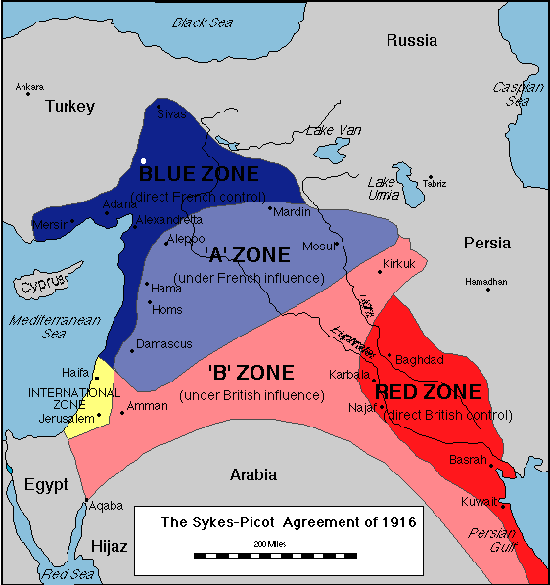Iraq Isis Crisis: Is This the End of Sykes-Picot?

Islamist militants who have declared an Islamic "caliphate" extending from Aleppo to Diyala province in eastern Iraq warned that they "will break other borders", in a video published by Isis official Twitter account.
The footage, featuring a Chilean Isis fighter who talks about the successful Blitzkrieg of the Sunni fighters in Iraq apparently from an Iraqi border post with Syria, is titled "The End of Sykes-Picot", from the 1916 secret agreement between France and Britain that split up the Arab provinces of the Ottoman Empire after World War I.
Showing a map of the border, the jihadist points to Iraq and Syria but then adds: "There is no border alas. Now this is all one country, Inshallah."
"Baghdadi is called breaker of barriers. This is not the first border we bring down, we will break other borders," he says among abandoned Iraqi army badges and vehicles left by fleeing soldiers.. "There is no nationality, we are all Muslims. There is just one country."
The boundaries signed by British diplomat Mark Sykes and Francois George-Picot of France, which divided the Arab territories of the Ottoman Empire into spheres of influence, is often cited as a cause of war and violence in the Middle East. The borders between the French and British areas later became the borders between Iraq, Syria and Jordan.
One criticism is that the division was made to please European interests more than those of the populations concerned. It also contradicted British promises made to the Arabs.
Moreover, the Arab Sunni community across the Middle East's centre was divide in half by the Syria-Iraq border, which was imposed by the Europeans.
"The artificiality of state formation has caused numerous conflicts over the last few decades," Henner Fürtig, director of the Institute of Middle East Studies at GIGA research institute in Hamburg, told Deutsche Welle . "These questions haven't been solved for a century and burst open again and again, in a cycle, like now with the ISIS advance in northern Iraq."

However, the theory that sees Isis as a sort of pan-Arab fighting force implementing a popular urge for unity of the Muslims has been harshly criticised by experts and academics.
In particular, no separatist or irredentist party ever emerged after the agreement was signed. Local protests against it were limited to the subdivision of Syria into several mini-states. The deal merely put on the map patterns of special administrative arrangements that were already present and agreed with the Ottomans. Syria and Iraq were already specific geographic entities before the end of the Ottoman Empire.
Most of Sykes-Picot was never implemented: "Stipulated French control in Mosul was soon reversed. Alexandretta (Hatay)reverted to Turkey whereas the Alawite lands of Syria fell to Damascus during the decades of the French mandate before World War II," says Iraqi expert Reidar Visser on Gulf Analysis blog.
As noted by FT's Roula Khalaf, blaming Sykes-Picot is a convenient way to overshadow more recent and significant meddling in Iraqi affairs, notably the US-led invasion of the country in 2003 which ousted the Baathist regime of Saddam Hussein, paving the way to sectarian struggle for power.
"To blame Sykes-Picot is to ignore the fact that territorial nationalism is deeply entrenched in Arab states today, despite the repeated outbreak of sectarian violence," she said.
© Copyright IBTimes 2025. All rights reserved.




















